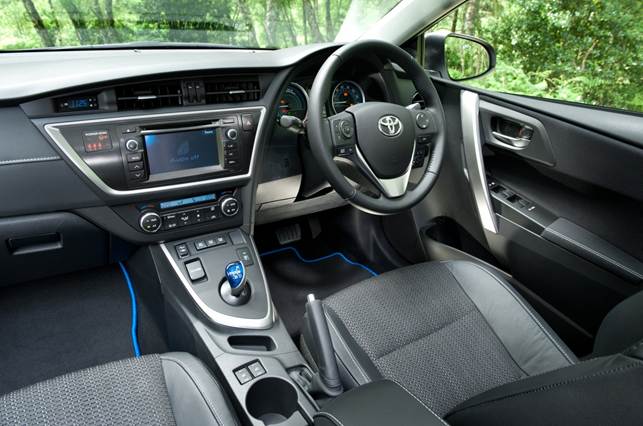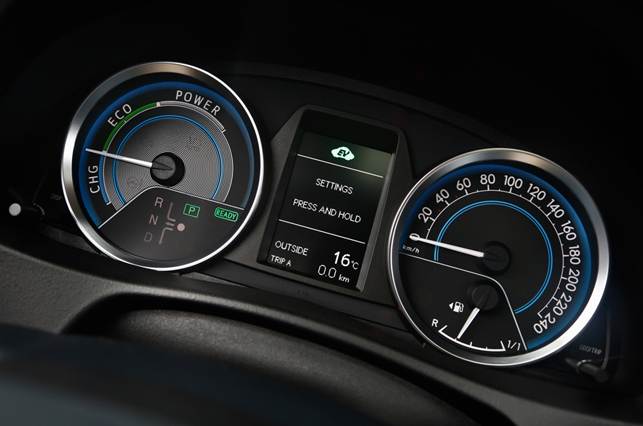Around the middle of last year, a Pacific
Blue Toyota Auris HSD arrived at our offices. I had secretly hoped it would be
an 86 and that I'd be spoiled with a year of rear-wheel-drive thrills, but
after I had a good look round, I was happy to note that CJ 19 JG GP was the
range-topping XR derivative. This meant that it possessed smart, blade-design
17-inch alloys, a full-length panoramic roof, dual-zone climate control, a full
leather interior with heated front chairs, electric windows, an auto-dimming
mirror, a nine-speaker audio system with USB port and remote audio controls. In
fact, the standard spec lacked only a satellite navigation system.
The cabin looked inviting and the seats
were comfy ... and then I saw it, leering at me from the facia - the lever for
the continuously variable transmission - but more on that later.

The
Auris is surprisingly competent on the road
Under the bonnet, the Auris HSD, for Hybrid
Synergy Drive, boasts the very same powerplant as its more famous Prius
sibling. The 1.8-litre, Atkinson cycle petrol engine is mated with an electric motor.
The pair is coupled in parallel, which means that power can be derived from
either source independently or simultaneously. The benefit of the technology is
a hard-to-believe average fuel-consumption figure of 3.9 L/100 km, at least
that's what Toyota claims.
In my first few weeks of hybrid motoring, I
found a very handy side effect of the hybrid powertrain. Since the battery pack
for the electric motor is stored below the boot board, the cost-effective
torsion-beam rear suspension layout found in all other Auris models has made
way for a more compact multilink setup. This arrangement provides a much
smoother and more comfortable ride.

Stylishly
laid out with high quality materials, the cabin of the Auris is capable of
competing against its German peers
The one area that didn't impress me,
though, was that CVT. This transmission doesn't offer a set of ratios like
manual or automatic 'boxes, but rather a set of pulleys and drive belt that
provide a range of ratios. This means that the ECU allows the engine to rev
high and maintain a set engine speed while subtly altering the gearing to
increase speed. It feels odd to hear and the engine sounds strained as the car
speeds up while the revs remain constant. Over the course of the test, it's a
trait I learnt to live with, rather than enjoy.
After a few months of casual commuting in
and around Cape Town, the Auris and I had settled into a nice routine. I really
enjoyed the JBL GreenEdge audio system and heated seats throughout winter,
though the latter takes some time to function efficiently and heat could hardly
be felt by the time my short commute was complete.
As the summer holiday approached, I was
looking forward to a long trip that would have added much-needed kilometres to
the odo. However, a couple of weeks before December the Auris had other ideas.

Hybrid-specific
instruments allow you to see how the Auris's drive system is working
On the way home one evening, I detected a
shudder through the drivetrain. Initially, it was intermittent, but as the trip
progressed it worsened and then the engine-management light illuminated. I made
my way home slowly and then reported to my nearest dealer, Market Toyota in
Claremont, the following day.
After a few days, the fault was still
apparent and the technician decided to consult colleagues at Toyota HQ to ask
if they had any experience in this regard. A few weeks later, I was called to
collect the car, as it had supposedly been fixed. Not a few kilometres away
from the dealer and it was dear the Auris had not been repaired. I made it back
to the office and called the same service centre to collect the car.